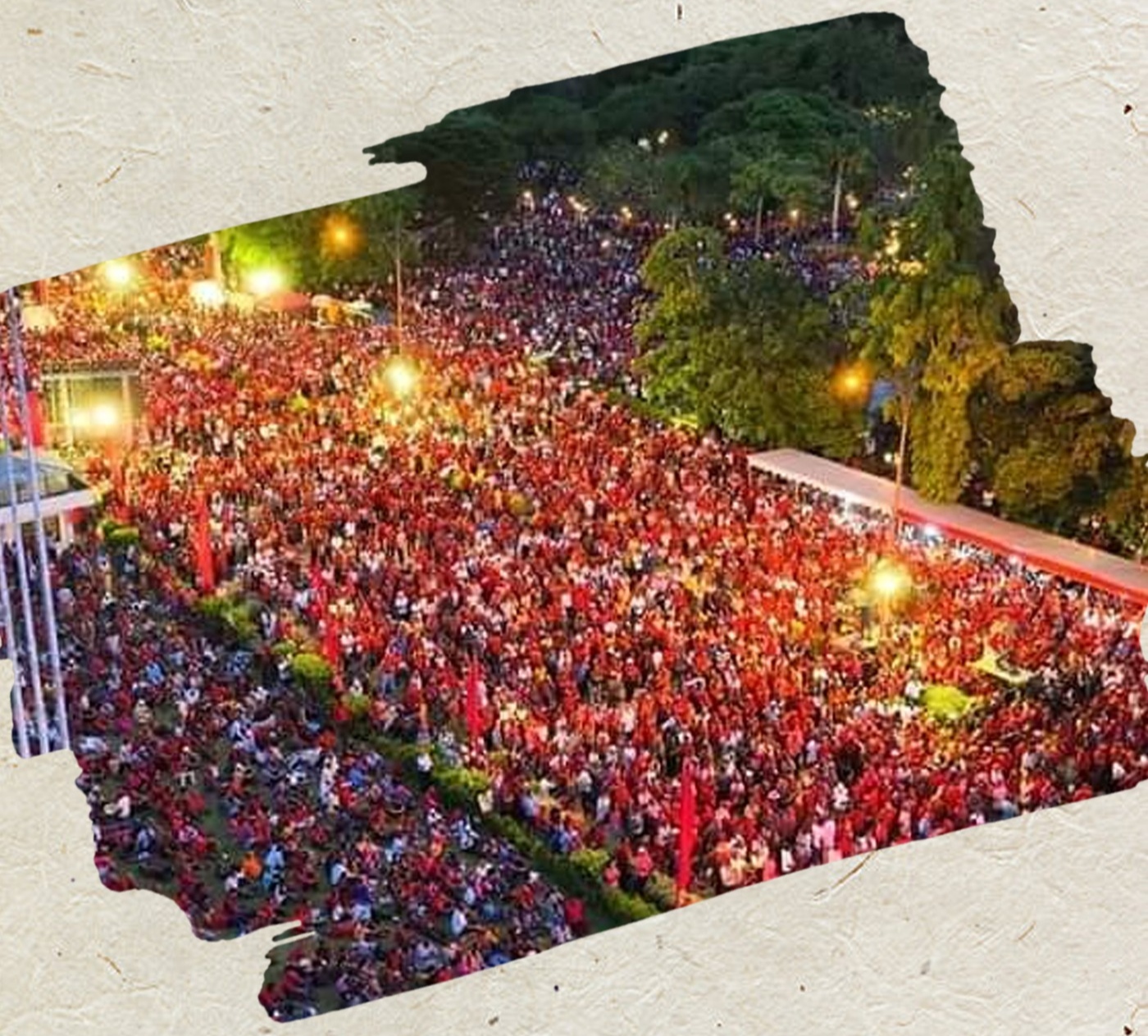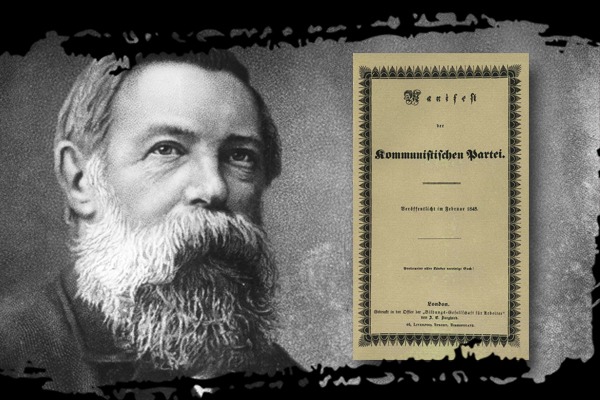International workers’ Day or the Labour Day is what we call the first of May. People around the world know that it is the day of the working people, reminding us annually of the events when workers in Chicago went on the streets to demand their rights and were subjected to police violence due to a bomb explosion, the perpetrator of which remains unknown. The police fired on the protesting workers, drenching the streets of Chicago in blood.
But why were these workers protesting? This aspect is rarely discussed. This protest was a milestone in the historical process that humanity has achieved through its development. The demonstration was part of the struggle to establish an 8-hour workday.
It’s not complex to understand that when humanity was in its developmental infancy, there were limited means to perform work, necessitating longer work time. As a being that makes tools for to embody themselves, humans began creating tools during the stages of their development. The invention of tools marked a revolutionary leap for humans above the rest of the animal world. Humans have been using tools for a long time, and many animals still use basic tools; for example, some birds use stones to stun their prey, and some use their saliva on branches to get the insects stick on them, for food. However, no other species besides humans have created tools to aid themselves.
What is the connection between these tools and the Labour Day?
This relationship is “inverse”, meaning that as humans continued to develop tools for their use, their work became increasingly easier. A spear crafted for hunting simplified the act compared to hunting with hands, acting as an extended arm and in scientific terms, helping to exert more force.
The tools that humans initially used in their simplest forms were later developed into more complex machines. With the development of machines, there was an increase in production. The time needed to perform a task without any tools was much longer compared to the time required when using tools, even the simplest ones. Machines, which are composed of multiple tools combined, further reduced the time required for the production. It’s well known that machines continue to advance every day and will keep advancing. Today, there is no doubt about the power of modern machines.
In Chicago, the demand to set the workday legal limit at 8 hours was primarily because the machine of that time had increased productivity and reduced the required time for production relatively, as in those new conditions, the workers were selling their labour power more than the time they were getting paid in wages, as the necessary labour time was decreased with increased productivity caused by the advanced machine. These conditions increased the workday length relatively (see Karl Marx’s distinction of relative and absolute increase in the workday length). The workers of Chicago did not agree to work in these conditions. Work beyond the necessary labour time pushes workers into the trench of unpaid labour, as the value that is surplus for the capitalist, is the unpaid labour for the workers, and ends up in the pockets of the capitalists. The time required for production is determined by the machines’ capacity to produce in that era, as production is meant to meet the needs of society and is set according to societal demands. In the 1880s, machines were advanced, production was increased, and the necessary labour time for production decreased. This means that with the help of advanced machines, humans could produce more in less time, thereby reducing the physical effort needed by workers. Thus, there is no doubt that production is a combined effort of humans and machines: humans are living labour, and machines are dead labour.
The great philosopher Karl Marx discussed the concept of the workday, deeply, in Chapter 10 of the first volume of his work, “Das Kapital,” where he recorded the history of the workday. In 1833, in England, the workday length was 16 hours for men and 14 hours for women. By May 1, 1848, this had been reduced to 10 hours.
To applaud the importance of this epoch-changing achievement, Marx in the inaugural address to “The First International”, said –
“…the Ten Hours’ Bill was not only a great practical success; it was the victory of a principle; it was the first time that in broad daylight the political economy of the middle class succumbed to the political economy of the working class.”
Right before giving this historic statement, he gave the brief but fundamental distinction between the political economies of the middle class and the working class as;
“This struggle about the legal restriction of the hours of labor raged the more fiercely since, apart from frightened avarice, it told indeed upon the great contest between the blind rule of the supply and demand laws which form the political economy of the middle class, and social production controlled by social foresight, which forms the political economy of the working class.”
Indeed, the Industrial Revolution advanced machines to such an extent that the need for human labor in production decreased significantly. Machines, representing ‘dead labor,’ were pitted against humans, those were developed to embody ‘living labor’. As production increased, instead of giving workers the free time as ‘their time’, the same amount of work or more continued to be extracted from them. This resulted in a dual burden on the workers: they were no longer received the time, which they could have used for rest, recreation, or personal development, and they had to work beyond the necessary labour time for production, without corresponding wages. This led to the creation of ‘surplus value’ for which the workers were not paid, and the entire value generated from this surplus labour time went into the profits of the owners. This is a clear demonstration of how the gains from increased efficiency and production due to technological advancements were not shared equitably with the workers.
The workers of Chicago took the streets to end this exploitation of labour, demanding that their workday, which was 10 hours or more, be reduced to 8 hours. This led to a violent clash at Haymarket Square, where many workers’ leaders were arrested and some were even executed. However, their struggle ultimately resulted in victory; the workday was eventually standardized to 8 hours, a practice that has since been adopted in almost all countries around the world. Their unparalleled struggle is a poignant reminder of their sacrifice and is worthy of remembrance. It is essential to draw inspiration from their courage and sacrifices.
These are indeed critical questions that require thoughtful consideration:
Have machines not progressed since 1886, or have they become more advanced and efficient?
Is there a need to reduce the workday legal limit in present time?
Is unemployment a problem in society?
How can the problem of unemployment be addressed?
There is no need for much effort to answer the first question; who doesn’t know to what extent humans have advanced machines. Today, robots and machines are capable of performing all production independently, where previously thousands of workers were needed, now only a handful are required. And the recent revolutionised development in Artificial Intelligence are yet to be measured by the leaders of workers’ movement.
The great capacity of machines to increase production is result of scientific and technological revolution. The increase in production shows that the time required for work is decreasing. Machines have increased production and reduced the time needed for it. However, in the regime of Finance Capital, humans have been reduced to merely machines that generate interest. Since governments are loyal to the interests of finance capital, they have focused on making policies that are against the people, because the government was established to protect the lives and property and ensure better living conditions. But the richest 1% bag nearly twice as much wealth as the rest of the world put together over the past years since 2020 according to Oxfam. Some more horrible facts in terms of India can be found in this report;
“The top 10% of the Indian population holds 77% of the total national wealth. 73% of the wealth generated in 2017 went to the richest 1%, while *670 million Indians who comprise the poorest half of the population saw only a 1% increase in their wealth.”
“Many ordinary Indians are not able to access the health care they need. 63 million of them are pushed into poverty because of healthcare costs every year – almost two people every second.”
“It would take 941 years for a minimum wage worker in rural India to earn what the top paid executive at a leading Indian garment company earns in a year.” (Oxfam)
These data basically expose the conspiracy of capitalism against people. This money circulates among them, not being invested in production or to make people’s life better, it is getting fluctuated in the hands of capitalists, and much of it is invested in the loans given to the working people from which arbitrary interest is being earned. Finance capital influences governments to make amendments in labour laws, farmer law, that favor privatizing industries and departments, stopping new permanent recruitments, ending pensions, cutting other periodic benefits, regulations related to Provident Fund, stopping wages for overtime, and much more, all under the pretext that machines have reduced the need for human labour. Finance capital no longer needs workers because its job is to earn interest, not to produce. It doesn’t need them in services too, a small number of loyal servants are enough for them. Therefore, it is not in favor of hiring new workers.
The question is whether the machine is for the convenience of humans or against them, and the answer is that yes, machines are meant to facilitate human tasks, not to replace them (living labour).
What should be done then? Should machines/technology/AI be removed from work? No, it’s impossible to remove them from work as they are a gift that has made human tasks easier so that people can complete their work more efficiently and enjoy their free time to play, dance, sing, read, travel, and enjoy and appreciate nature. Because humans are living labour that, beyond just eating and drinking, need rest and all these activities for a dignified life. If humans have developed technology to ease their work, they rightfully deserve to reap the benefits. Since this earth and all its natural resources are common to all humans, the free time created by human labour should also be shared among all humans and must be distributed equally. Thus, the working day, which is currently eight hours, should be reduced to give working people more free time and to enable unemployed workers to find employment.
Indeed, as the necessary labour time has significantly reduced since 1886, there is a case to be made for reducing the standard eight-hour workday. Reducing the legal limit of workday could potentially create more employment opportunities as Marxism outlined:
– Reducing the workday by 10% could create an additional 11% in new jobs.
– Reducing the workday by 20% could lead to a 25% increase in new jobs.
– A 30% reduction in the workday could result in a 42% increase in new jobs.
– Reducing the workday by 40% could create a 66% increase in new jobs.
– A 50% reduction could potentially double the employment opportunities, creating 100% more jobs.
This suggests that shorter workdays not only distribute work more equitably across a larger number of workers but could also help address unemployment issues by creating more employment opportunities. This approach could lead to a more balanced work-life for individuals, allowing more time for personal development and leisure, which is crucial for a healthy society.
Indeed, the concentration of wealth and the policies driven by finance capital necessitate a shift towards policies that focus on public welfare and employment creation. By emphasizing the need for employment and strengthening the public sector, “new governments” can redistribute wealth more equitably. This involves investing the wealth that is accumulating in the hands of a few back into productive avenues like public services and infrastructure, thereby generating more work and improving the public sector’s robustness.
This strategy not only creates more employment but also reinforces the position of workers by reducing the influence of finance capital, which Karl Marx famously noted as carrying the seeds of its own destruction. A strong demand for employment could significantly challenge the current dynamics of Capitalism and pull back the collective wealth into the societal fold. It’s essential to counter the policies of capitalism with pro-people policies that ensure wealth generated benefits the broader society, not just a select few. This would mean adjusting workdays and workloads to create more opportunities for employment and a more equitable distribution of free time and resources across the workforce.
The true significance of International Workers’ day (May Day) indeed becomes evident if it focuses on the campaign to protect the rights of workers. Workers can only safeguard themselves through a direct confrontation against capitalism. It is essential to reduce the workday to a point where every Employment-seeking worker can secure employment, and this reduction should continue over time. This approach truly honors the essence of May Day and serves as a genuine tribute to the martyrs and activists who fought for these rights. Because if the struggle becomes merely reactionary, it ends up serving the system rather than challenging it. The need is to address the root causes of problems, not just their symptoms, to ensure that issues are resolved and don’t merely wither away superficially.








